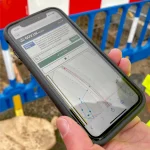ASA Forces UK Broadband ISPs to Advertise AVERAGE Peak Time Speeds

The Advertising Standards Authority has today given notice to Internet Service Providers (ISP) in the United Kingdom that, with effect from 23rd May 2018, they will expect all broadband ISPs to advertise “average” speeds (the median measured at peak time) for their headline packages.
At present the existing guidance, which has been in place since 2012, requires that any headline broadband speed being promoted by an ISP must be achievable by at least 10% of their users (i.e. the fastest 10% of subscribers) and these figures should be preceded by an “up to” qualifier. On top of that the ISP must also explain any limitations that may affect the user’s speed.
For example, a normal ADSL2+ based copper broadband line (these are still used by most UK premises) can theoretically deliver a maximum download speed of 20-24Mbps, but under the ASA’s current rule most of the major ISPs will instead advertise a download rate of “up to” around 17Mbps (i.e. this is what the fastest 10% receive).
Advertisement
Separately Ofcom’s Code of Practice for Broadband Speed also requires ISPs to give consumers, at the point of sale, an accurate personal estimate of the maximum speed that their line can support; this usually comes in the form of an upper and lower performance range. Speeds that fall too far below this can enable customers to exit their contract without penalty. We should point out that these rules are separately being tightened (here).
As a result of this the ASA claims that complaints about broadband speed(s) have fallen by 60% since the rules were introduced, but this year they’ve also come under growing pressure from politicians to act (here, here and here). The Government’s former Digital Economy Minister, Ed Vaizey MP, simply described the current approach as “misleading” and “ridiculous“.
Ed Vaizey MP said (April 2016):
“The idea that if you can deliver to 10% of houses the broadband speeds you are advertising on a large billboard and get away with it seems to be a complete and utter joke.”
Matt Warman MP said (March 2017):
“Consumers have come to expect that ‘Up to 8Mbps’ often means rather less – but the fact is that regulations say that just 10 per cent of users have to be able to receive that speed for the advertising to be acceptable. It’s like walking into a supermarket and choosing the best apple only to have it exchanged at the checkout for the most shrivelled.
Broadband providers are complicit in this fraud on 90 per cent of consumers, but it’s the Advertising Standards Authority that needs to get a grip on it.”
Suffice to say that the ASA was pressured into beginning a new examination of the perceived problem (here) and in May 2017 they proposed four options for solving it (here), although this is arguably less about delivering greater accuracy and, as the ASA said, more “intended to better manage consumers’ expectations.”
To that end the Committees of Advertising Practice (CAP) have discarded the option of requiring ISPs to promote a RANGE of speeds. Instead, numerical speed claims in broadband adverts will in future be based on the download speed available to at least 50% of customers at peak-time and described in ads as an “average.”
Advertisement
The CAP also recommends that speed testing facilities, such as those provided on the ISP’s website, should be promoted in ads “wherever possible“.
CAP’s Position on Median Peak-Time Download Speeds
CAP considers that median peak-time download speed is the most meaningful speed measure to customers because:
* Consumers may interpret a range as the speed they are likely to get individually, as opposed to the range that consumers generally are likely to get, and a range does not tell consumers where in the range they fall, if at all. A median speed, described as “average”, is easily understood and allows for consumers to make comparisons between different ads that they see.
* As peak time is when traffic volumes are highest and traffic management policies are most likely to apply, a peak-time measure provides a better indication of the actual speeds consumers are likely to experience. CAP considers that a 24-hour measurement has the potential to mislead consumers by not providing an indication of the speed they are likely to receive at the time when people use the internet the most.
At present Sky Broadband already does something similar and is one of the only ISPs to have been promoting an “average speed” across their packages since December 2016 (here). Sky’s ADSL2+ based service promotes an average download of 11Mbps (usually up to 17Mbps), while their FTTC based Sky Fibre promotes an average of 34Mbps (usually up to 38Mbps) and Sky Fibre Max promotes an average of 57Mbps (usually up to 76Mbps).
Shahriar Coupal, Director of the CAP, said:
“There are a lot of factors that affect the broadband speed a customer is going to get in their own home; from technology to geography, to how a household uses broadband. While we know these factors mean some people will get significantly slower speeds than others; when it comes to broadband ads, our new standards will give consumers a better understanding of the broadband speeds offered by different providers when deciding to switch providers.
We continually review our standards to make sure they reflect consumers’ experiences, the technology available and the evidence base to make sure our standards are in the right place. Following extensive research and consultation, we hope our new standards will improve customer confidence in future ads.”
The change could be said to ignore the fact that many subscribers may still be able to achieve much faster performance than the advertised median, yet at the same time it also reflects that a lot of other users will still suffer even slower speeds. Ultimately the 50% rule was arguably the least contentious option on the table.
Put another way, local broadband speeds can fluctuate for so many different reasons that no national advert will ever be able to accurately communicate the speeds you can expect. This is also one reason why Ofcom’s separate rule, which requires that customers be given a personal speed estimate during the order process, is so important.
Advertisement
Matt Hancock, UK Minister for Digital, said:
“I’m delighted to see that CAP is finally changing the way broadband speeds are advertised. Headline “Up to” speeds that only need to be available to 10% of consumers are incredibly misleading – customers need clear, concise and accurate information in order to make an informed choice. We have been fighting for this for some time now, and it’s a great victory for consumers. The clarification on the way fibre services should be advertised is a welcome step in the right direction, and I hope the ASA will keep the matter under review.”
Andrew Glover, ISPA UK Chair, said:
“ISPA supports today’s change to rules governing the advertising of broadband speeds as an important way of providing consumers with clear and accurate information. The new rules, alongside existing steps of providing speed information at point of sale, the ability to exit a contract and switching, mean consumers have a number of tools at their disposal to make an informed choice about which ISP or broadband service is right for them.”
On the other hand we note that UPLOAD SPEEDS appear to have once again been overlooked by the change, with the press release only mentioning download performance and that’s despite upstream performance having become more important than a few years ago. We fear that this could create a tedious situation where ISPs promote uploads using a different method from downloads or hide them altogether (some already do this). We asked the ASA about this and they said that adverts for upload speed would be “assessed on a case-by-case basis.”
Elsewhere the ASA said they would defines peak time as between 8pm to 10pm (mirroring the definition used by Ofcom), although this guidance applies to advertising of residential broadband services. However the ASA did inform ISPreview.co.uk that this definition “may apply” to other services too (e.g. business broadband) “where the circumstances of an ad are sufficiently similar.”
We highlighted to the ASA that this could be a problem because business and residential services have different peak-times (e.g. home users peak in the evening, while business traffic is more daytime centric). The ASA clarified that if, for example, and ad was clearly targeted at small businesses then they would “expect the advertiser to hold evidence that a representative peak time measure had been used“, which appears to allow some flexibility for business ISPs to use a different time period.
Sadly all of this creates sort of a chicken and the egg style situation for sites like ISPreview.co.uk, which means we have to wait and see how ISPs adapt before being able to fully introduce the changes (no doubt some smaller ISPs will simply ignore the guidelines). We can of course generalise where similar technologies are used but we can’t do that for other independent network platforms, unless they adapt.
In the meantime our approach will be to continue listing ‘up to’ speeds and also offer an average download alongside, which will be left blank if the provider has yet to set one. Over time we’d expect to remove the ‘up to’ speeds once the industry has adapted.
Separately we’ll be keeping an eye out to see if the new guidance results in more ISPs rejecting consumers who are predicted to receive a slower broadband speed, which could negatively impact their advertised rate. Sky has already given us one possible example of this approach (here).
One final point is that we also expect this change to impact “full fibre” (FTTH/P) providers, which may advertise Gigabit capable connections but they can’t always deliver on that full speed at peak times. Speaking of which, the CAP has separately today posted the outcome of their probe into how ISPs advertise using “fibre broadband” terminology, which is such an important issue that it requires its own separate article (here).
[poll id=”18″]
Mark is a professional technology writer, IT consultant and computer engineer from Dorset (England), he also founded ISPreview in 1999 and enjoys analysing the latest telecoms and broadband developments. Find me on X (Twitter), Mastodon, Facebook, BlueSky, Threads.net and Linkedin.
« UPDATE3 Autumn UK Budget 2017 Sees £385m for Full Fibre Broadband and 5G






















































Comments are closed